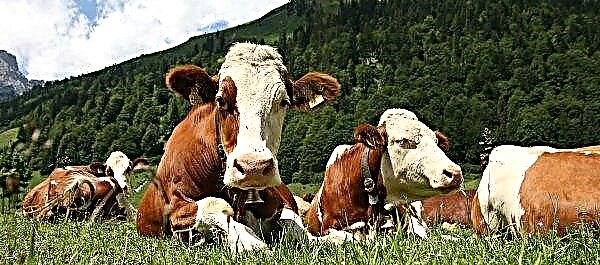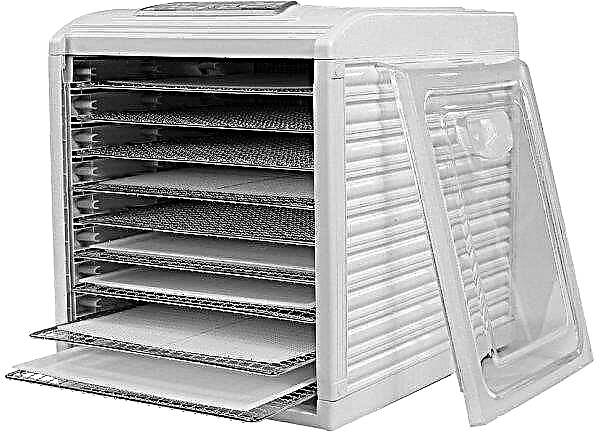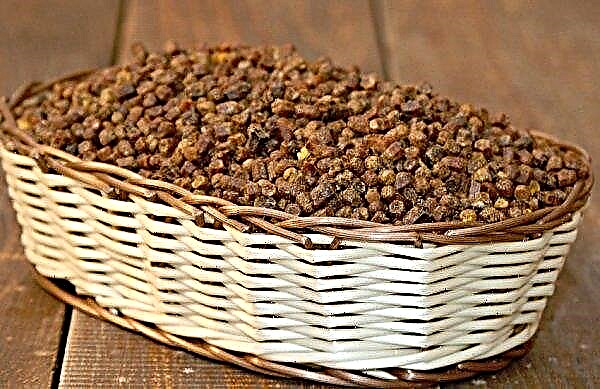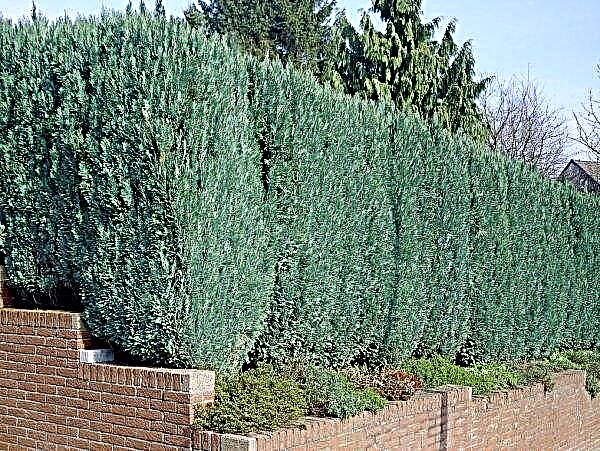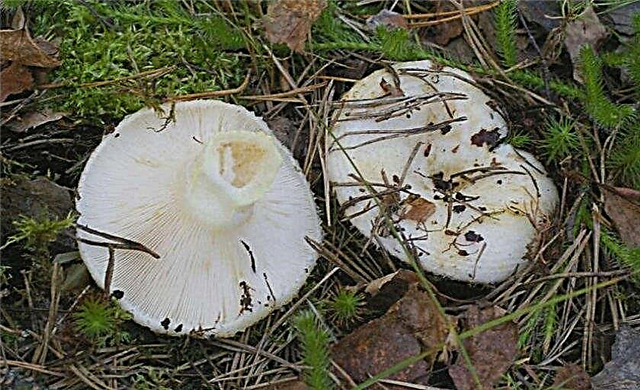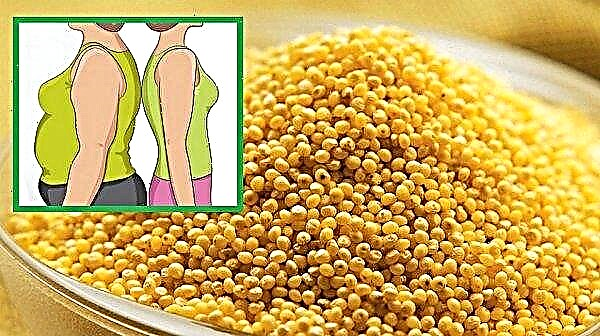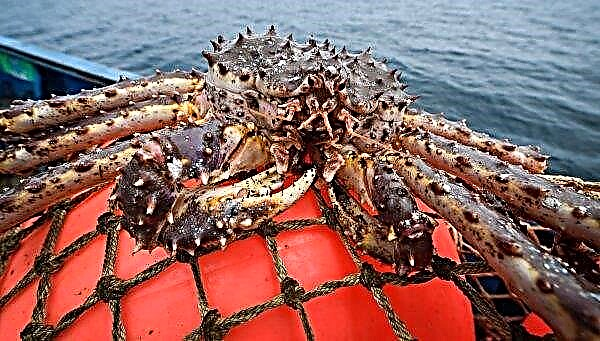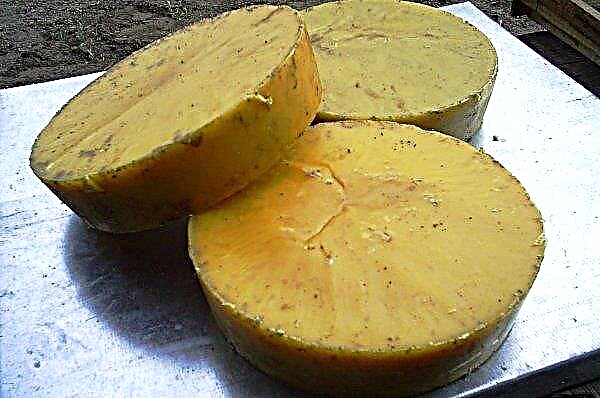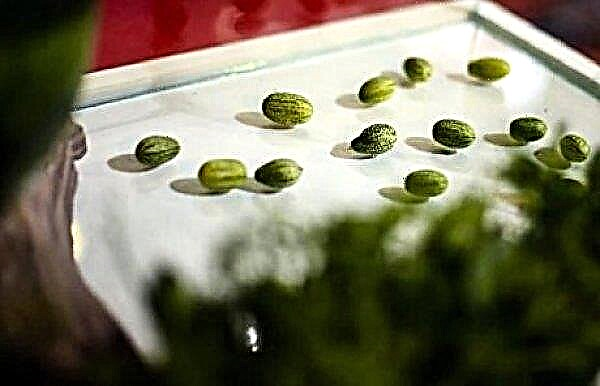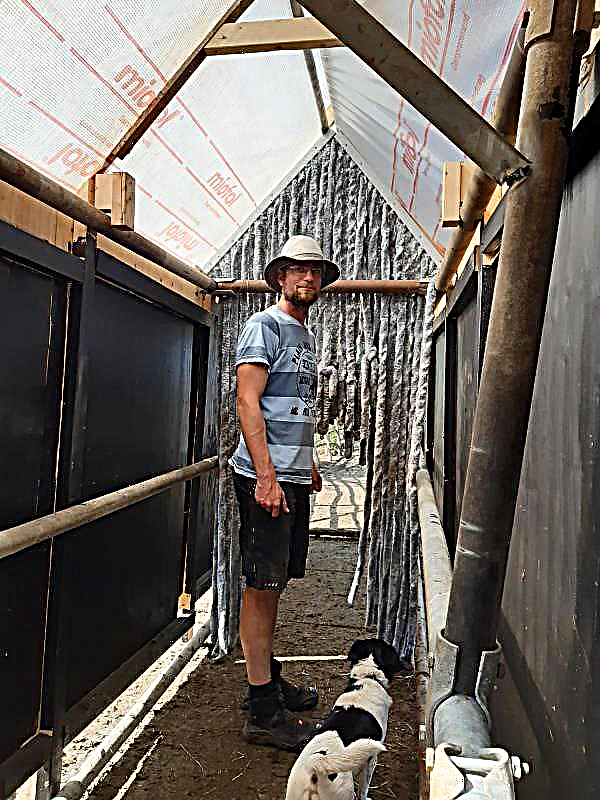Shosha cucumber is an ideal option for any summer resident. This plant is unpretentious and well suited for cultivation in the middle climatic zone. In addition, the fruits of the cucumber combine excellent taste as well as culinary characteristics, which makes it a universal plant. From this article you will learn in detail the main characteristics of the variety, as well as the main subtleties of its cultivation in the infield.
Characterization and description of the variety
Shosha cucumber is one of the most advanced products of Russian selection. Scientists have created a cold-resistant plant, characterized by excellent production and taste. This made it possible to cultivate culture in almost all regions, from the southern zone to the central and northern regions.
In addition, this hybrid is able to grow and develop perfectly in:
- greenhouse conditions;
- room environment, on the windowsill;
- open ground.
Photo gallery
Shosha is a self-pollinating highly productive variety with a powerful and branched stem, as well as a strong root system. This is an annual grassy species, best suited for growth and fruiting in open soil, in areas with a temperate climate. The average length of the plant is within 1.5 m, but under optimal conditions it can be extended up to 2 m. Flowering on the bush appears together, the flowers are small, bright yellow in color, resemble a crown.Did you know? The fruits of cucumber in culture appeared about 6 thousand years ago and it is not surprising that this plant is even mentioned in the Bible. In the scriptures, the vegetable was characterized as one of the main food crops of the inhabitants of ancient Egypt.
Productivity and fruiting
The growing season of the variety is short, only 39–45 days, after which the first fruits can be harvested. The fruit is small, up to 10 cm long and 3 cm wide, juicy, with a crispy peel and elastic flesh. It is characterized by a rich dark green hue and a hilly surface. The average weight of the fruit is in the range of 40–80 g, this allows you to collect from 1 m² of plantations up to 18 kg of crop per season.
Application area
Shosha cucumber is ideal for fresh consumption, its rich and pleasant, sweetish flavor perfectly complements seasonal salads, as well as other cold dishes. The fruits are also irreplaceable for the preparation of pickles, including during whole preservation. Such products are distinguished by high taste characteristics, as well as a long shelf life.
Pros and cons of growing
- The main advantages of the variety over related varieties of cucumber:
- excellent taste qualities of both fresh fruits and culinary processed;
- excellent suitability of the crop for the preparation of pickles;
- high productivity;
- increased production and commodity characteristics;
- versatility, the plant is suitable for home and industrial cultivation;
- the fruits of the plant are rich in vitamins and all kinds of trace elements.
- The plant has a few negative qualities:
- not distinguished by increased resistance to certain specific diseases;
- cannot be grown from seeds of its own collection, as it is obtained in the process of direct crossing of the original varieties;
- does not have unique taste characteristics.
Optimal time for landing
Today, in gardening, two methods of cultivating cucumbers are distinguished, which cannot but affect the general method of their cultivation, as well as the timing of sowing. The so-called method of seedling cultivation and direct sowing in the soil is known. The first is used for breeding crops in the temperate and northern zones, characterized by a short summer, as well as low temperature indicators. The second one when cultivating varieties in artificial conditions or in southern regions with a warm and mild climate.
Cucumbers are sown for seedlings in the second half of February or in early March. Thus, by the end of May, the plants will reach the 3-4 leaf phase, which is best suited for diving young cucumbers in open soil or for further cultivation in greenhouse and room conditions. Sowing directly into the natural soil is carried out when the average daily temperature is + 15 ° С.
Did you know? The forest regions of India, as well as the foothills of the Himalayas, are considered the birthplace of cucumber. In this area, to this day, you can find wild forms of vegetables.
Planting and growing cucumbers
This variety requires standard measures and skills, so even a beginner can grow it. At the same time, you should definitely choose a method for growing cucumber for yourself, on which the general agricultural technique of growing a crop depends. At the same time, it should be remembered that the cucumber is a representative of tropical plants, so you must strictly observe the subtleties of its cultivation.
Planting seedlings
Shoshi cultivation by the seedling method has a lot of advantages, the main ones being almost 100% yield of seedlings from seeds, as well as shorter ripening periods of cucumber fruits. They start the process with the choice of soil, only fertile well-fertilized soils are suitable for the procedure, rich in both organic and mineral compounds. A mixture of equal parts of humus and sod land is best suited for this. On 10 l of such a substrate add:
On 10 l of such a substrate add:
- 1 cup chopped wood ash;
- 20 g of superphosphate;
- 10 g of potassium sulfate.
Cucumbers are planted in general large containers and individual pots. They can be made of any materials, but the main requirement for them is the height. It should be about 10 cm, which will allow the seeds to take root safely and develop a powerful root. The bottom of the tank should have a drainage hole and a layer of gravel, small gravel or broken brick, releasing excess soil from the substrate. Seeds are sown to a depth of 3-4 cm, while the distance between each well should be about 5 cm. After sowing, the containers are watered abundantly and, if possible, covered with transparent polyethylene or glass. This will help to create greenhouse conditions above the soil surface that favorably affect the development of sprouts. Without this, the speed of their shoots decreases significantly.
Seeds are sown to a depth of 3-4 cm, while the distance between each well should be about 5 cm. After sowing, the containers are watered abundantly and, if possible, covered with transparent polyethylene or glass. This will help to create greenhouse conditions above the soil surface that favorably affect the development of sprouts. Without this, the speed of their shoots decreases significantly.
After this, the sprouts should create the appropriate care and maintenance regimen. For this:Important! Each well should have about 2-3 seeds, this will help protect against low seed germination. However, in the future, no more than 1 seedling should be left in one hole.
- seeded flowerpots are transferred to a well-lit (with daylight hours of at least 10 hours a day) and a warm place (with a temperature of +22 ... + 26 ° С);
- seedlings are provided with moderate but daily watering;
- after the appearance of 2 leaves, it is necessary to remove the protective shelter (gradually, over several days);
- sprouts provide regular loosening, 1-2 times a week;
- excess ovaries break off;
- if necessary, plants are tied to a support.
 Further transplanting of seedlings into open soil is started when all plants enter the phase of 4 leaves. For this, a stable thaw and temperature regime should be formed, not less than +14 ... + 16 ° С. Presumably, depending on the region of cultivation, this time begins from the end of April to the second half of May.
Further transplanting of seedlings into open soil is started when all plants enter the phase of 4 leaves. For this, a stable thaw and temperature regime should be formed, not less than +14 ... + 16 ° С. Presumably, depending on the region of cultivation, this time begins from the end of April to the second half of May.Seedling method
Any soil is suitable for sowing cucumbers by the seedlingless method, but the crop bears fruit on well-fertilized substrates with a high humus content (chernozems, fertilized sandy loam and loamy soils). To achieve this, the plot is well fertilized with compost or manure (6 kg / 1 m²), as well as potash and mineral mixtures (20 g of superphosphate and 10 g of potassium sulfate are added per 1 m²). Only open, well-lit areas are suitable for growing vegetables. If you plan to grow a cucumber on a stem, they also should not shade each other. Fertilize the land designated for planting as early as the fall. This is necessary in order for organic compounds to transform and saturate the substrate. In addition, from autumn, the soil must be sown to a depth of about 20 cm. This contributes to instant freeze it in the winter, which destroys dangerous pests and pathogens of many infections in the soil. If possible, in the spring the plot is fertilized with mineral nitrogen, it will help accelerate the growth and development of young cucumbers. Dry and liquid forms of urea (50 g / 1 m²) are used for this.
Fertilize the land designated for planting as early as the fall. This is necessary in order for organic compounds to transform and saturate the substrate. In addition, from autumn, the soil must be sown to a depth of about 20 cm. This contributes to instant freeze it in the winter, which destroys dangerous pests and pathogens of many infections in the soil. If possible, in the spring the plot is fertilized with mineral nitrogen, it will help accelerate the growth and development of young cucumbers. Dry and liquid forms of urea (50 g / 1 m²) are used for this.
Seeds are sown in open soil in a row-wise manner. To do this, in a designated area, rows are cut about 4-5 cm deep, with a row spacing of 40-50 cm. In each row, seeds are placed in groups of 2-3 pcs., At a distance of 10 cm from each other. After the sprouts sprout, the beds are carefully thinned. Thus, between each adult sprout there must be a space of at least 10 cm.
Important! Cucumbers should be grown after carrots, cabbage, onions, tomatoes, sweet peppers. In turn, you should not cultivate the plant after melon and pumpkin.
Cucumber care after planting
Shosha cucumber requires standard measures for after-planting care. They consist in the correct and timely implementation of watering, top dressing of bushes, as well as garter, without which it will be difficult to achieve high productivity. In addition, the vegetable must be treated for diseases and pests, which often lead to the complete death of cucumber plantings.
Fertilizers and proper watering
Cucumbers are watered regularly, this culture is quite demanding on moisture, so the procedure is carried out daily. The beds are not moistened abundantly, so you need to achieve a water regime in which the top 10 cm of soil will be constantly well moistened.
Abundant watering with long intervals for cucumbers is undesirable, such a regime is not able to provide the plant with the necessary moisture, which dramatically affects the size and quality of the fruit. Water is applied to the beds both under the root and in the upper way, but only with the alternation of methods the highest crop yield is observed. Fertilize cucumbers several times a season. Use for this both mineral and organic top dressing. Organics are introduced 2 weeks after planting seedlings, not earlier than in the phase of 4-5 leaves. Use for this solution of manure (1: 5) or chicken droppings (1: 7), such a feed on 1 m² should be no more than 5 liters. Before or during flowering, cucumbers are fed with mineral additives, the most suitable for this will be a mixture of 20 g of superphosphate and 10 g of potassium sulfate (for 1 m²). Dissolve them in 10 l of water and bring under the root.
Fertilize cucumbers several times a season. Use for this both mineral and organic top dressing. Organics are introduced 2 weeks after planting seedlings, not earlier than in the phase of 4-5 leaves. Use for this solution of manure (1: 5) or chicken droppings (1: 7), such a feed on 1 m² should be no more than 5 liters. Before or during flowering, cucumbers are fed with mineral additives, the most suitable for this will be a mixture of 20 g of superphosphate and 10 g of potassium sulfate (for 1 m²). Dissolve them in 10 l of water and bring under the root.
Bush garter and shaping
Preparation for garter is started even during the sowing of seeds or when transplanting seedlings in open soil. For this, a support about 2 meters high made of wooden pegs or metal rods is installed near each plant. As they grow, the cucumber is attached to the support, tied with twine.
 Such a support can be replaced with a general structure consisting of 2 racks and a horizontal rod. It is installed along the entire row, after which a garter from twines fixed to the stick installed in the root zone of each sprout is lowered from the horizontal bar to each plant. As they grow, the cucumber is braided around the twine, which becomes the main support.
Such a support can be replaced with a general structure consisting of 2 racks and a horizontal rod. It is installed along the entire row, after which a garter from twines fixed to the stick installed in the root zone of each sprout is lowered from the horizontal bar to each plant. As they grow, the cucumber is braided around the twine, which becomes the main support.
Form cucumbers already in the phase of 8-9 leaves. During the procedure, you need to completely remove the lateral branches in the lower part of the plants. Those that are in the middle part are shortened by 1 forming fruit and leaf. The apical shoots are cut to 2-3 leaves. Thus, it is possible to achieve a uniform arrangement of fruits on the bush, as well as avoiding the waste of plant power on the maintenance of irrational parts.
Soil care
Like any other crop, cucumber does not tolerate competition with weeds, which dramatically reduces its productivity. That is why the weeding of beds is carried out regularly, in order to avoid the appearance of any external vegetation. The procedure is carried out 1-2 times a week, to a depth of 5 cm. Loosening is often combined with weeding and additionally performed after heavy or prolonged rains. It helps to saturate the soil with oxygen, which improves not only the crop yield, but also the resistance of the cucumber to a variety of adverse factors.
Mulch the cucumbers as early as possible, immediately after planting the seedlings or in the phase of 2-3 leaves (when cultivated in a seedling-less way). Mulching is carried out using wood sawdust, bark and other natural materials, they can be replaced with special agrofibre made of polymeric materials. Timely mulching makes it possible:
Timely mulching makes it possible:
- avoid soil moisture loss;
- resist weathering of mineral substances from the substrate;
- eliminate the possibility of freezing of the root system;
- to exclude hilling of bushes;
- create a special microclimate in the soil;
- reduce the need for plants for frequent loosening.
Possible growing difficulties
Since the Shosha variety is considered an unpretentious plant, difficulties with it arise only if the necessary rules and measures for maintenance are not observed.
This leads to the emergence of favorable conditions in the growth zone of the stands for the development of a variety of specific diseases and all kinds of pests. They cause yellowing, twisting of foliage, as well as inhibition of the growth of cucumber and a decrease in its yield. Diseases and pests of Shosh cucumber and methods for their elimination:
Diseases and pests of Shosh cucumber and methods for their elimination:
| Parasitic organism | Symptoms of lesion | Repair methods |
| Treasure trove | Dark brown spots on foliage and fruits | Bushes are treated with a solution of copper sulfate (1:10) |
| Nematode | Yellowing foliage, falling ovary | The affected parts are sprayed with copper sulfate (water solution 1:10) |
| Aphid | Small pale dots on the lower part of the foliage, when copied abundantly, they lead to wilting of the green mass | Plantings are treated with a 2% solution of potassium permanganate |
| Leaflet | Small green caterpillars (about 2 cm long) feeding on plant leaves | Bushes and nearby soil are treated with garlic infusion or a solution of potassium permanganate (2%) |
Harvesting
The first harvest of Shoshi is carried out 40 days after the start of active vegetation. At this time, the first fruits reach a length of 10 cm, which is an ideal size for fresh consumption and further cooking. Harvesting gherkins is carried out 7-10 days earlier. Harvesting is carried out gradually, selecting only the fruits of the required size. Cucumbers are picked together with the stem, after which it is shortened to 0.5 cm for long-term storage. In this form, at 0 ... + 5 ° C, the cucumber is able to fully store its freshness for 10-14 days.
The hybrid form of Shosh cucumber has gained popularity among vegetable growers due to the excellent quality of the fruit, unpretentiousness in the conditions of detention, as well as high yield. In addition, powdery mildew, cucumber mosaic and target-like spotting are not afraid of this plant, which makes post-planting care of the crop much easier. Grow at your place Shoshu and you are sure to see all the advantages of this variety.Important! During the period of mass fruiting, the fruits must be harvested every 2 days, otherwise this will lead to the appearance of overripe cucumbers, which reduces the crop yield by several times.

